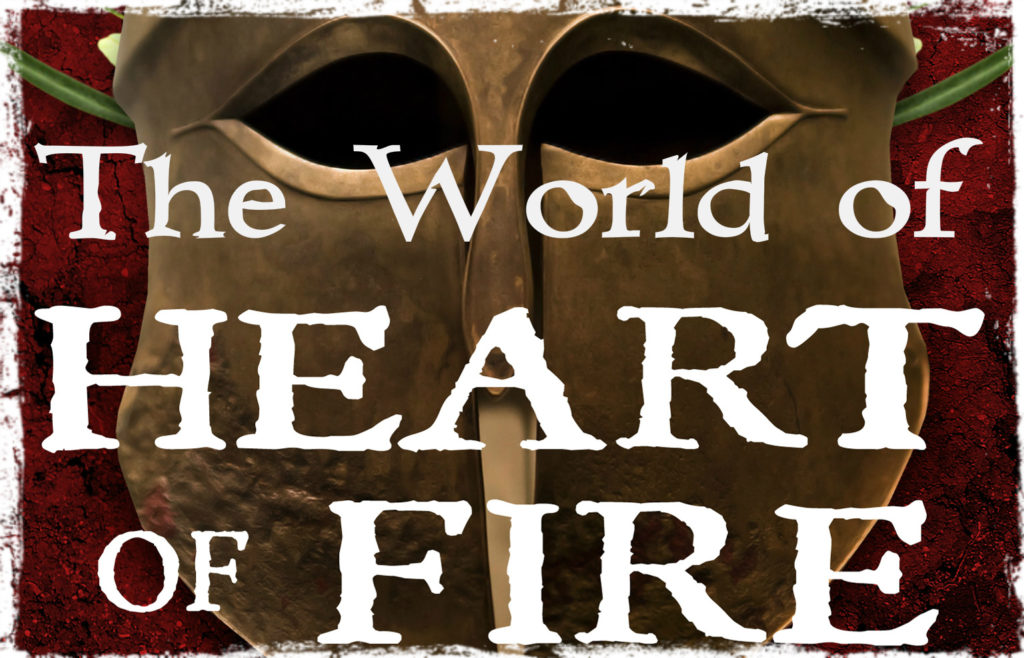In the last post we looked at the mythological origins of the Olympic Games.
In part two, we are going to take a brief look at the Olympic Games as history remembers them, but that too is a hazy undertaking.
Most historians agree that the first recorded Olympic Games took place in 776 B.C. and ran for almost twelve centuries until they were banished as a pagan practice by the Christian, Roman emperor, Theodosius I in c. A.D. 394.
When the games began in the eighth century, the city-states of Greece were on the rise, and so it was inevitable that politics would enter into the Games early on. Olympia was actually fought over, and an example of this was the ongoing argument between Elis and Pisa, an argument in which Sparta eventually became involved.
Control of Olympia passed back and forth between Elis and Pisa, but the Eleans eventually won out. Nevertheless, the Olympic Games were a place where city-states met and declared their strength, their grievances, and their alliances.
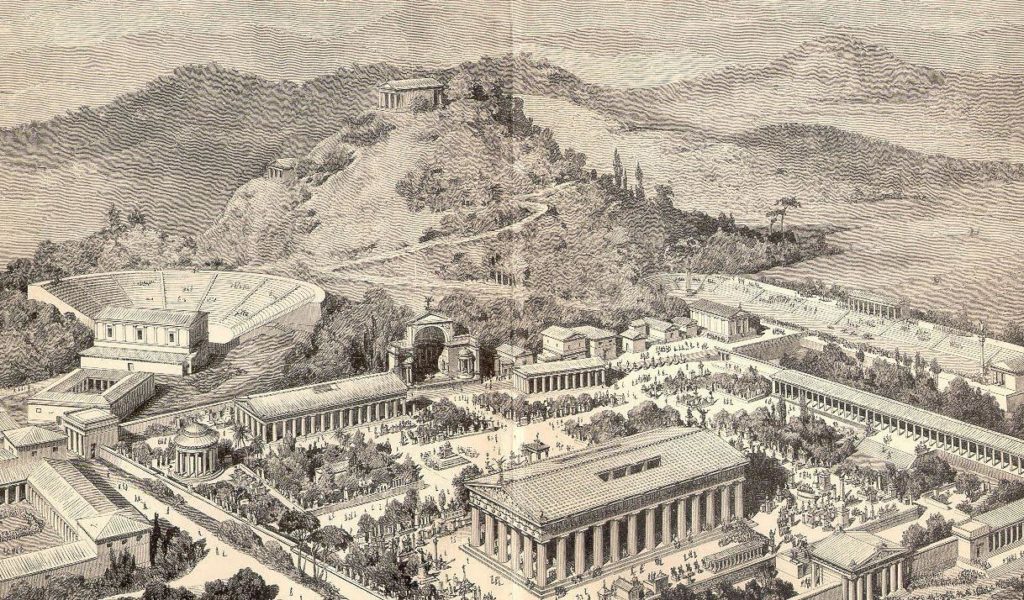
Artist impression of Ancient Olympia
Despite the occasional rancour and politicizing of the Games, the Olympiad remained a sincere religious ritual overseen by the Gods themselves and in honour of Olympian Zeus.
There were other ‘crown games’, as they were known. These included the Pythian Games in honour of Apollo at Delphi, the Nemean Games in at Nemea, and the Isthmian Games in honour of Poseidon at ancient Isthmia, near Corinth.
Many men competed in all of the crown games, but the Olympiad was the greatest and most revered of these games. A victory there made a man all but immortal.
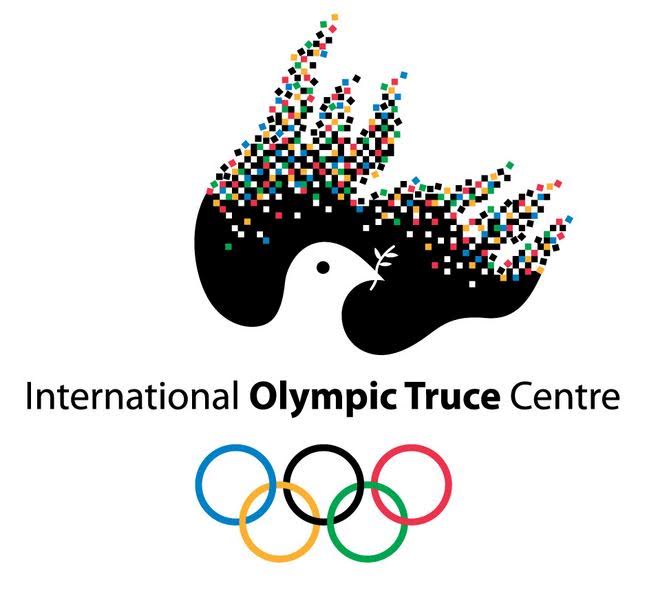
Modern IOC symbol for Olympic Truce – the tradition continues!
When the Olympic Games were declared, the entire Greek world was supposed to come to a standstill during a peace known as the Sacred Truce, or Ekecheiria, which means a ‘laying down of arms.’
To violate the peace of the Sacred or Olympic Truce, was to dishonour the Gods and risk their anger.
This would have been difficult during a time such as the Peloponnesian War when the city states were at each other’s throats and tearing their world apart. It is no surprise that Olympic competition could turn deadly, but more on that later.
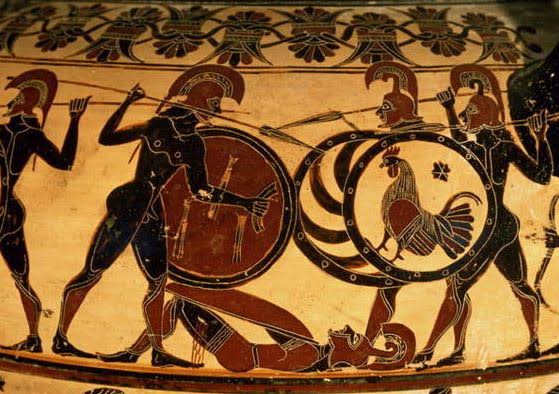
Greek hoplite battle
Only freeborn, Greek men were permitted to compete in the Olympiad, and at first, it was mainly men from the Peloponnese, as evidenced by the high number of Arkadians on the early victor lists.
Women, as mentioned in the previous post, were only permitted within the sanctuary during the Games of Hera, the Heraia, the first officially recorded one of which took place in the sixth century B.C.
The banishment of women from the Games, it is said, began around 720 B.C. when men began to compete in the nude rather than loin cloths.
Initially, the Olympic Games took place over a single day, and the only event was the stade race. This was a sprint of about 200 meters, which was the length of the stadium at Olympia, said to have been measured after the steps of Herakles himself.
So, the original Olympic event was the two-hundred meter sprint!
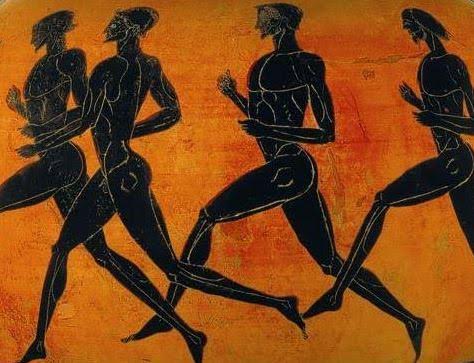
Ancient greek runners
Over time, as Greek colonies began to spread across the Mediterranean world, and the Games grew in popularity, Greeks from outside of the Peloponnese, much farther afield, began to travel to Olympia to compete. More days, and more events were added to the games until we arrive at the year in which Heart of Fire takes place – 396 B.C.
This was a brutal period in Greece’s history. All of the city states were bitter and reeling from the Peloponnesian War (c. 431-404 B.C.), and they were still having at each other, even in the midst of a supposed peace, called the Peace of Nicias.
Sparta and Athens were at the forefront of the aggressions, as were Thebes, Corinth, Argos and others. The Olympiad of 396 B.C. has certainly been an interesting and complex period to write about. We’ll explore the politics of the period more in the next post.
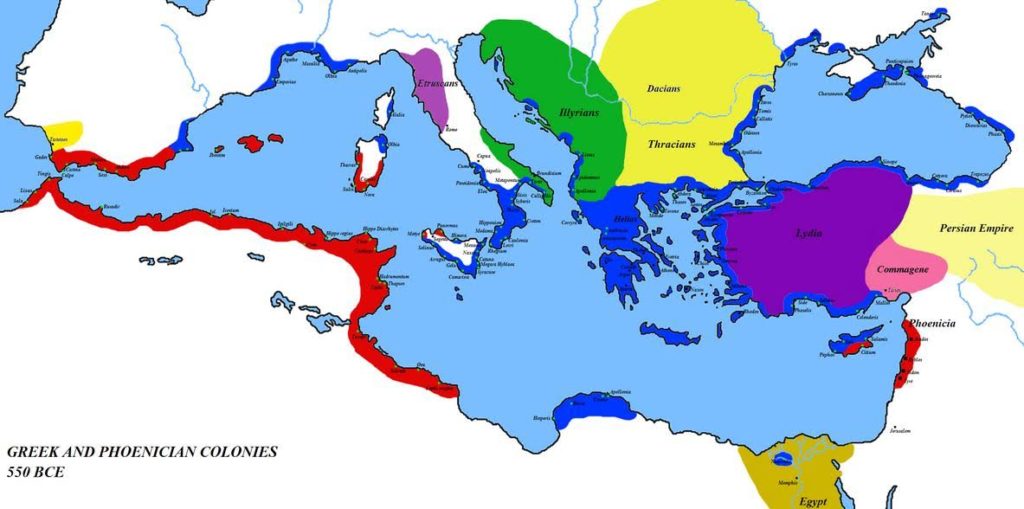
Greek Colonies of Mediterranean (in blue)
By the time of the 396 B.C. Olympiad, the Games were five days long, rather than the original one, and had many more events. Here is the most agreed-upon order of events:
Day 1 – This was the day for the equestrian events, including bareback horse races, the two-horse chariot race, the Synoris, and the marquee event, the Tethrippon, or four-horse chariot race.
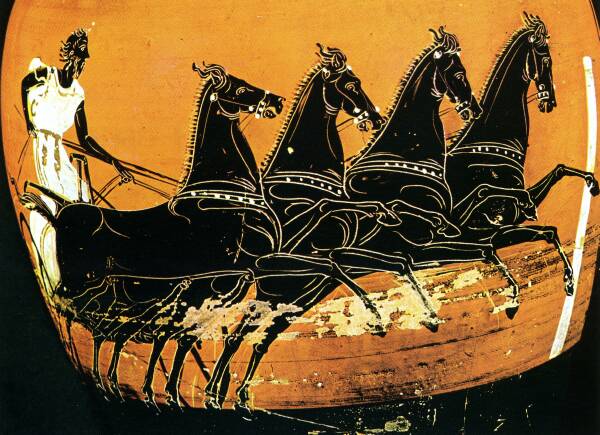
Chariot racing in the ancient Olympics
Day 2 – This was the day for the Pentathlon which was an event that tested the best, all-around, warriors, It included a stade race of 200 meters, standing long jump with the use of weights called halteres, the discus, the javelin or akontismos where throws could soar over 100 meters, and lastly wrestling.
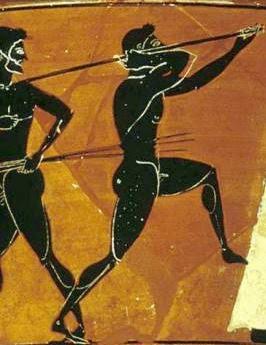
Javelin thrower
Day 3 – The third day was reserved for the foot races. By 396 B.C., these included the stade race (200 meters), the diaulos (400 meters), and the dolichos (a long distance race that could be anywhere from 2,400 to 5000 meters). About twenty runners competed at a time, having chosen lots to determine their heat. They stood on the starting line of the stadium and waited until the judge yelled “Apite!”
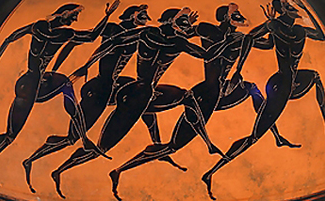
Runners
Day 4 – This was the day of the fighting events, and make no mistake, these were brutal. Men died. These included the wrestling, boxing, and the no-holds-barred Pankration.
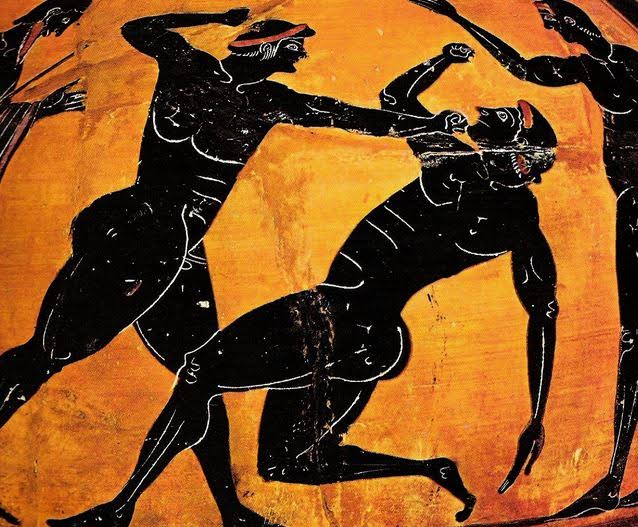
Pankration
Day 5 – The last event of the ancient Olympics is one that has faded away into the pages of history, but which has its origin, some believe, in the foundation myth of Daktylos Herakles, mentioned before, and the armoured Daktyloi who were charged with protecting the baby Zeus on Mt. Ida in Crete in the age of Kronos. This final event was a hoplite race, a sprint for men dressed in full hoplite armour and each running with one the twenty sacred shields that were stored in the Temple of Hera at Olympia. This was known as the Hoplitodromos, and in Heart of Fire, we get to experience this unique and almost forgotten Olympic event.
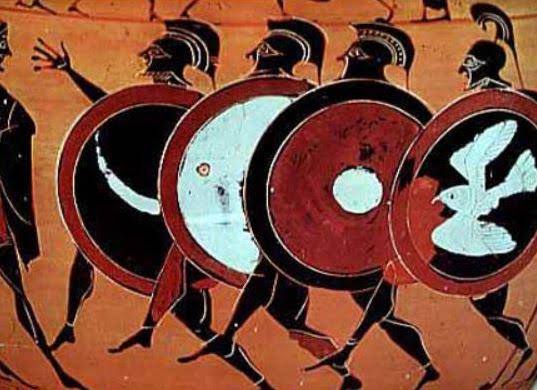
The Hoplite Race

